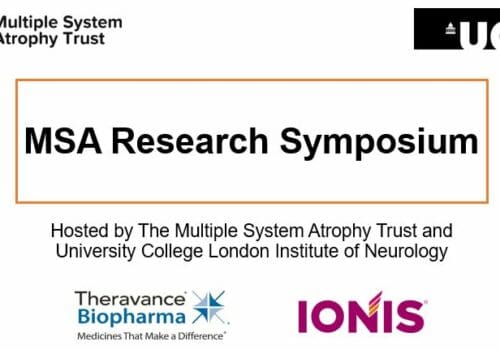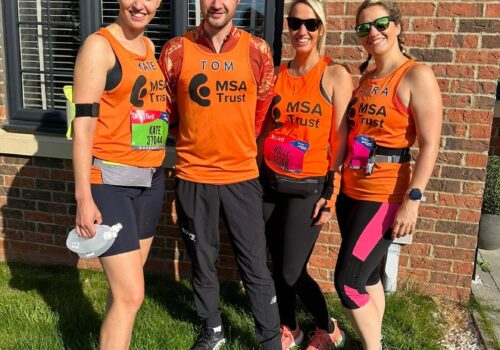From better diagnosis to cure – Part 2
In my Blog before Easter I pointed out that in March there was an MSA conference in Innsbruck, Austria and there is another in Salerno this month (April) *. On looking at their programmes I saw that there were certain recurrent themes. These indicated the latest directions research was taking. In these two blogs I am describing what these themes are and why I think they are significant. In the last blog I looked at ‘biomarkers’ and in this one I will look at the all important ‘Cause and Cure’.
Cause and Cure. Let me mention just two areas which are now being vigorously pursued. The first relates to the protein that you have probably heard a lot about called alpha-synuclein. Normally it does a useful and possibly essential job (like the thousands of other proteins in the cells of the body). But it can change its form – misfold – and in this form its molecules can start assembling together to form chains which eventually form fibrils and then larger aggregates inside nerve cells or the cells that support them. What’s more the small assemblages can move from cell to cell and induce the ‘normal’, good alpha-synuclein to misfold and assemble in the same way. There could be many ways in which this protein aggregation could be triggered off and many consequences of it which cause indirect and direct damage to nerve cells. That’s a simple account of what is currently thought to be going on.
The same protein, behaving in a similar way, is also involved in Parkinson’s, Alzheimer’s and other neurological diseases. Now that is a bit of good news because it means that there are people in all these fields working on ways of stopping this same protein from behaving this way. It is now a prime target for therapeutic intervention.
One technique receiving a lot of attention is to regard the small (and even larger) assemblies of the molecules of alpha-synuclein in the same way as viruses, and to stimulate the immune system to produce anti-bodies to destroy them by developing a vaccine. This would be the sort of vaccine that must be effective after the disease has taken hold. There is much work going on with animal models, cell cultures and with human volunteers to develop and test such a vaccine. It will be interesting to hear the latest progress in this area at these two conferences.
Another area receiving a lot of attention, including funding by the MSA Trust, is inflammation. MSA, as with other neurological diseases, is accompanied by inflammation in the brain. Just like when an abrasion to your skin or a bruise or infection becomes inflamed, an inflammatory reaction occurs in the brain when MSA takes hold. Clearly this is a reaction aimed at destroying the invader, clearing the debris and eventually healing the affected area. But it is thought that with these neurological diseases the inflammation might be getting out if hand and damaging the cells instead of restoring them. In that case, treatment with an appropriate anti-inflammatory agent could stop the continuing damage. The investigations continue.
Repurposing of drugs. One topic that does not appear on the programmes of the two conferences is the ‘repurposing’ of drugs. This is to do with discovering drugs that are already licensed and in use for one condition that have a beneficial effect on another such as Parkinson’s or MSA. One such drug being tested for Parkinson’s is a diabetes drug and there is another that has received attention in the press recently that is primarily for malaria. Such drugs have already been through thorough safety and other testing so if they were found also to work for another condition they could be brought to the clinic for that condition much more quickly. ‘Repurposing’ suggests that you can take any old drug and use it for something else, which of course is nonsense. So there has to be active searching for the suspected needles in the haystack. There is currently a lot of activity going on looking for existing drugs which could have a disease-modifying effect on Parkinson’s. If such a drug were found to be effective it would be a small step to see if it was also effective for MSA and other synucleinopathies – which is the term that covers all the neurological diseases that show aggregated alpha-synuclein pathology.
* The two conferences:
If I can get hold of reports of these two conferences I will give you an update later on.
Austrian Neurology Society Congress (Österreichischen Gesellschaft für Neurologie), Innsbruck, Austria, Mar 16 – 19. http://www.oegn2016.at/
5th International Multiple System Atrophy Congress (IMSAC) Salerno, Italy, April 22-23, 2016. http://www.aristea.com/msa2016
Disclaimer: The views and opinions expressed in the blogs published on these pages are those of the authors and do not necessarily reflect the official policy or position of the MSA Trust.




